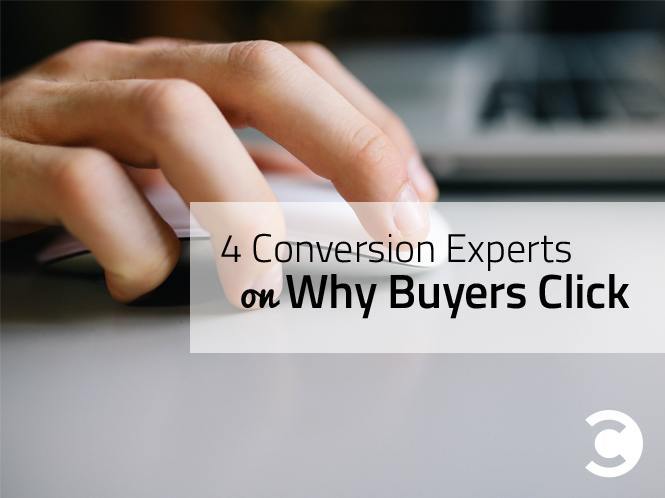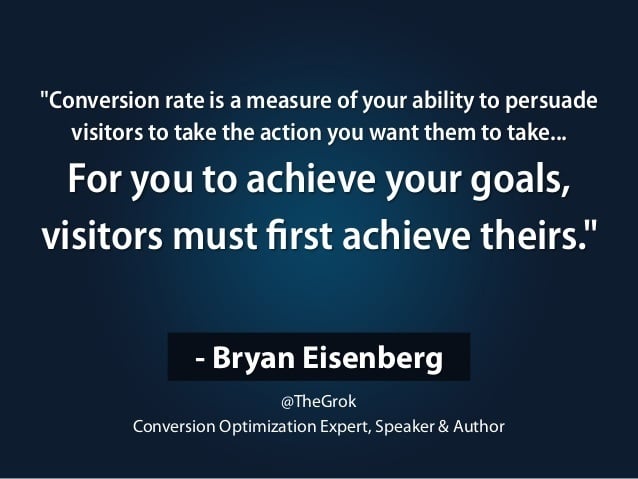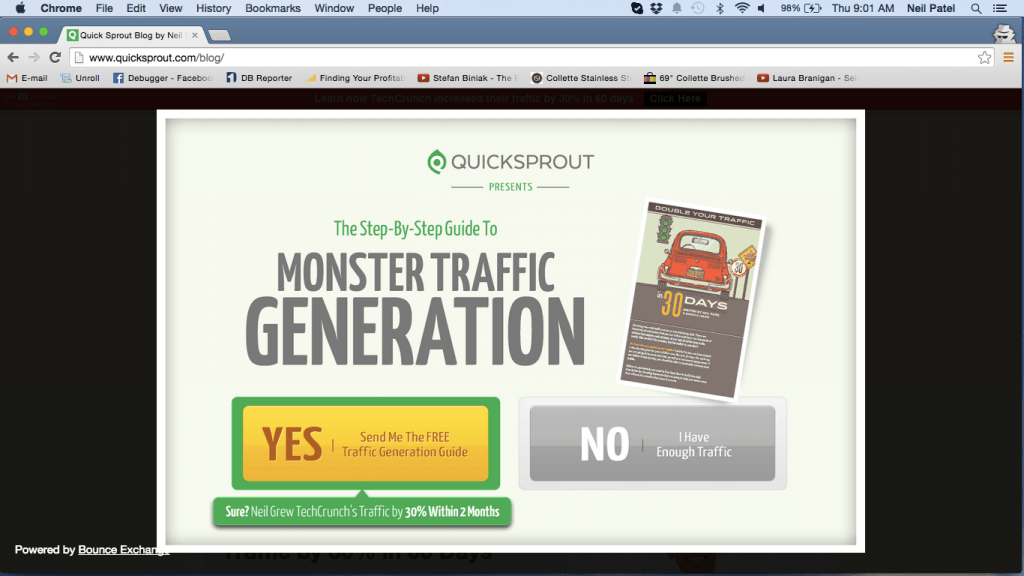
Give me a C. Give me an R. Give me an O.
What’s that spell? CRO. Let’s go!
Yes indeed, savvy marketers are rallying around conversion rate optimization, the process of improving conversion. CRO is the big game.
The winners in online marketing know this. They focus on developing CRO skills. They practice the discipline daily. And like any team intent on building and protecting their lead, they look to top professionals for ideas they can use to perpetually improve.
The upcoming Conversion Road Trip, hosted by Unbounce, will bring many big league CRO experts together to present strategies for optimizing conversion. I managed to get four of the tour’s speakers to answer questions about where it all begins in the CRO game: inside the minds of buyers.
You Begin with the Customer
Optimization superstar Angie Schottmuller began by saying, “Successful business strategy doesn’t begin with a product; it begins with a customer—a living, breathing person with unique interests, quirks, pain points, and needs. Wise companies put their customers’ goals ahead of their own by creating products, services and content that specifically fulfill and appeal to their customers’ needs and desires.”
Angie showed me this…

“Personas are a means of defining a distinct customer audience (who, where, how, why) in a tangible format, so marketers can understand how to help their customers achieve success,” she said.
HubSpot’s Luke Summerfield chimed in with, “Personas are critical because they help guide your digital marketing strategy—including your strategy for conversion rate optimization. Developing a detailed persona of your ideal customer should be the first step in your digital marketing strategy.”
“The goal of any marketing campaign is to make your messaging resonate enough with a user or viewer so they convert,” added Michael King of iPullRank. “Building personas takes out a lot of the guesswork.”
“Understanding how buyers make decisions—categorizing them and looking for behavioral patterns—can and should influence everything you do, from your marketing channels to your messaging,” said Anna Sawyer of Guidebook. “Smart, well-researched personas and their resulting campaigns will spark interest from more of the right people.”
Anna said she believes as marketing channels multiply, marketers are wise to increase the number of personas they use. “The wisdom used to be, ‘If you have more than five personas, you’re not doing your job right.’ But beneath the five macro personas are many more buyer types that have more intricate behaviors, triggers, and needs. You should continuously challenge and update your personas and test your tweaks. It makes the sales and product teams happy and gives you something to rally around. It forces everyone to talk to customers more.”
Psychology is the Root of Conversion Science
“Whether it’s a click, a like, or a purchase, at the end of the day, the goal of any marketer is to elicit human behavior,” said Luke Summerfield. “Having a deep understanding of how and why humans behave the way they do will give you the knowledge needed to tailor your marketing to best influence the behavior you want.”
Luke added, “The best approach is to develop a hypothesis of what you think will perform well by incorporating proven concepts of psychology and neurology into your marketing.”
“When you’re building personas, you’re trying to understand what makes a certain segment of your target audience tick,” said Michael King. “What are their needs, motivations, and what influences their decision making?”
King said, “Psychology is the fundamental component. All of the personas we build are data-driven, so it’s not much different than a well-written analytics report in that you’re telling stories about people based on data and adding a layer of psychology to make sense of what they are doing.”
“Without psychology insights, a persona is just an audience profile, which provides negligible insights to fuel marketing,” said Angie Schottmuller.
Angie continued, “A basic audience profile covers demographic (who), geographic (where), and sometimes behavioral (how) factors. A persona takes this to the next level by including psychographic (why) details that paint a more complete picture of the audience (i.e., Why do they buy? Why don’t they buy? What kind of car do they drive? What do they do for fun?).”
“Psychology discovers what makes someone tick; marketing psychology discovers what makes someone click.”
– @aschottmuller
Angie explained that using the right emotional appeal (e.g. risk, belonging, exclusivity, surprise) hooks the System 1 side of the brain and can increase the persuasion that drives conversion.
“Over the past few years, whether they like it or not, people have been getting more and more targeted ads and content,” said Anna Sawyer. “Things like micro-targeting on Facebook allow us to create smaller groups where people feel affinities with one another. The goal is to hit them with a message that makes them go, ‘These guys really get me!’”
A Few Campaigns That Push Psychological Buttons
I asked the Conversion Road Trip speakers to toss out some campaigns they believe demonstrate the power of personification and psychology.
Power-Packing Puppies
Anna Sawyer came back with an integrated event marketing example by Mophie, a manufacturer that “empowers the mobile world to stay powerful” with charging solutions for mobile devices.
It’s #NationalPuppyDay and we happen to have @gopro puppy cam footage from #mophieRescue at #SXSW last weekend. https://t.co/wg0yLBRnKz
— mophie (@mophie) March 24, 2015
Anna said Mophie’s social media play at this year’s SXSW event tapped into the paralyzing fear that one might run out of battery power while networking. Event-goers whose phones were running low tweeted with the hashtag #mophierescue. Winners received special deliveries: Mophie chargers packaged in little whiskey barrels secured around the necks of St. Bernard puppies.
Making It Hard to Say No

Michael King is fond of the way Neil Patel calls on the fear of missing out with a Yes/No exit pop-up he uses at Quicksprout. When leaving the site, users are served a pop-up offering a guide to “Monster Traffic Generation.” King likes how the “No” button is followed by “I Have Enough Traffic.”
King says this is a good example of psychology at play because the option to not say yes makes you stop to think. He said personas come into play because the wrong type of messaging will completely turn off certain users.
The Force
Angie Schottmuller, a self-proclaimed Star Wars geek, chose to show me a VW commercial, which supported the launch of the new model Passat.
She said VW cleverly gains attention through interest and story association and then demonstrates an ease feature—remote engine starting. The commercial ends with the child’s epic response to the car starting, which seals a lasting impression.
Angie pointed out the commercial also manages to invoke and answer questions like: Is a VW perceived as “cool?” Is this VW right for my lifestyle and personality? Will I be cutting edge, yet still my practical, geeky self, if I own this car?
#BecauseOfMom
Luke gets goose bumps watching this spot from P&G from the Sochi 2014 Olympic games. The commercial, which tells stories of the love and nurturing from the mothers of the athletes, powerfully incorporates a number of psychological appeals.
Up for a Road Trip?
I want to thank Angie, Anna, Luke and Michael for their help with this post and encourage you to attend their sessions at the Unbounce Conversion Road Trip. Use the code “convinceandconvert” to get 25% off!
Angie Schottmuller, @aschottmuller, will teach you how to harness color physiology for greater marketing conversion and deliver actionable usability tests and scorecards.
Anna Sawyer, @guidebook, will show you the content marketing donut—a visual depiction of how to create high-converting programs that re-use and recycle, creating natural conversion opportunities.
Luke Summerfield, @SavvyLuke, will explain the way to activate stored memories and trigger emotions by engaging the viewers five senses through mirror neurons.
Michael King, @iPullRank, plans to show you how to track users on the persona level to increase conversion rates.

